Avian Influenza Viruses in Wild Birds: Virus Evolution in a Multihost Ecosystem
- PMID: 29769347
- PMCID: PMC6052287
- DOI: 10.1128/JVI.00433-18
Avian Influenza Viruses in Wild Birds: Virus Evolution in a Multihost Ecosystem
Abstract
Wild ducks and gulls are the major reservoirs for avian influenza A viruses (AIVs). The mechanisms that drive AIV evolution are complex at sites where various duck and gull species from multiple flyways breed, winter, or stage. The Republic of Georgia is located at the intersection of three migratory flyways: the Central Asian flyway, the East Africa/West Asia flyway, and the Black Sea/Mediterranean flyway. For six complete study years (2010 to 2016), we collected AIV samples from various duck and gull species that breed, migrate, and overwinter in Georgia. We found a substantial subtype diversity of viruses that varied in prevalence from year to year. Low-pathogenic AIV (LPAIV) subtypes included H1N1, H2N3, H2N5, H2N7, H3N8, H4N2, H6N2, H7N3, H7N7, H9N1, H9N3, H10N4, H10N7, H11N1, H13N2, H13N6, H13N8, and H16N3, and two highly pathogenic AIVs (HPAIVs) belonging to clade 2.3.4.4, H5N5 and H5N8, were found. Whole-genome phylogenetic trees showed significant host species lineage restriction for nearly all gene segments and significant differences in observed reassortment rates, as defined by quantification of phylogenetic incongruence, and in nucleotide sequence diversity for LPAIVs among different host species. Hemagglutinin clade 2.3.4.4 H5N8 viruses, which circulated in Eurasia during 2014 and 2015, did not reassort, but analysis after their subsequent dissemination during 2016 and 2017 revealed reassortment in all gene segments except NP and NS. Some virus lineages appeared to be unrelated to AIVs in wild bird populations in other regions, with maintenance of local AIVs in Georgia, whereas other lineages showed considerable genetic interrelationships with viruses circulating in other parts of Eurasia and Africa, despite relative undersampling in the area.IMPORTANCE Waterbirds (e.g., gulls and ducks) are natural reservoirs of avian influenza viruses (AIVs) and have been shown to mediate the dispersal of AIVs at intercontinental scales during seasonal migration. The segmented genome of influenza viruses enables viral RNA from different lineages to mix or reassort when two viruses infect the same host. Such reassortant viruses have been identified in most major human influenza pandemics and several poultry outbreaks. Despite their importance, we have only recently begun to understand AIV evolution and reassortment in their natural host reservoirs. This comprehensive study illustrates AIV evolutionary dynamics within a multihost ecosystem at a stopover site where three major migratory flyways intersect. Our analysis of this ecosystem over a 6-year period provides a snapshot of how these viruses are linked to global AIV populations. Understanding the evolution of AIVs in the natural host is imperative to mitigating both the risk of incursion into domestic poultry and the potential risk to mammalian hosts, including humans.
Keywords: avian influenza; ecology; evolution; influenza; phylogenetics; viruses.
© Crown copyright 2018.
Figures
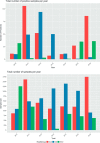



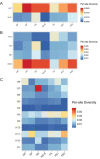


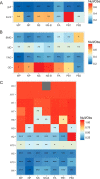

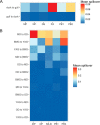
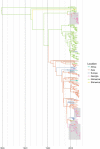
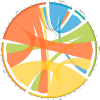
References
-
- Latorre-Margalef N, Gunnarsson G, Munster VJ, Fouchier RA, Osterhaus AD, Elmberg J, Olsen B, Wallensten A, Haemig PD, Fransson T, Brudin L, Waldenstrom J. 2009. Effects of influenza A virus infection on migrating mallard ducks. Proc Biol Sci 276:1029–1036. doi:10.1098/rspb.2008.1501. - DOI - PMC - PubMed
Publication types
MeSH terms
Grants and funding
LinkOut - more resources
Full Text Sources
Other Literature Sources
Medical
Miscellaneous

